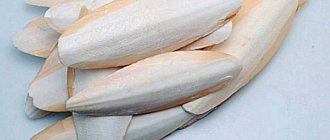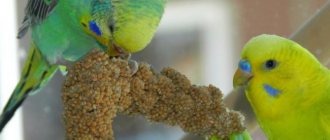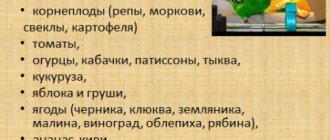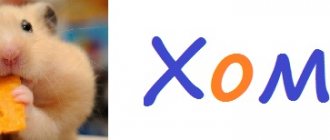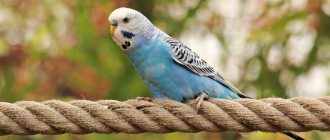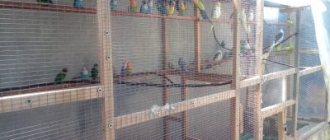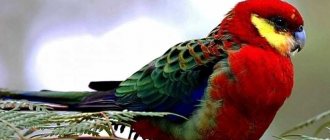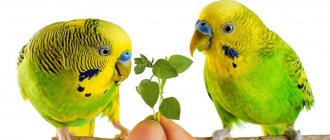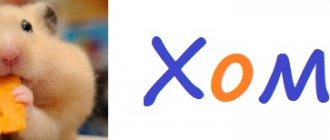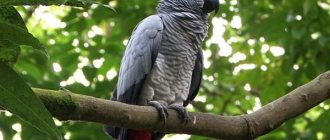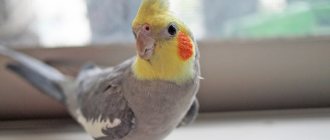Many people choose feathered pets for home keeping. Decorative birds have good intelligence and delight owners with their perkiness, beautiful plumage and ringing voice.
Parrots are often kept in houses and apartments. In order for your feathered friend to live a relatively long time and not get sick, it is necessary to create proper care for the bird and select a healthy menu. The diet of parrots should include not only grain crops, vegetables and fruits, but also special supplements rich in vitamin and mineral complexes. Some of these additives to the food of birds are sepia and mineral stone.
In the article we will look at why birds need mineral stones, their necessity and benefits, the composition and description of the stones, sepia, how to install them in a cage and accustom birds to them.
What is sepia and its benefits for birds
Sepia is another important addition to a parrot's diet. It is crushed crumbs of desalinated and compressed parts of sea mollusks - skeleton, bones, shell, which contain large amounts of calcium, mineral complexes and vitamins.
Positive properties of sepia for parrots and other birds:
- strengthens the pet’s skeleton and bones;
- helps in the formation of eggs;
- improves the condition of feathers, makes the plumage shiny;
- promotes proper metabolism in the body;
- used by birds to grind and strengthen the beak.
How to properly give vitamins to a parrot
Vitamins are given to parrots strictly according to instructions. Usually the course of treatment is 14 days. Afterwards you should take a two-month break.
In most cases, vitamins are liquid. Therefore, they need to be added to water. For greater effect, the drink should be changed every day.
It is important to remember contraindications and not to extend the course of treatment without reason. As stated above, an excess of nutrients is harmful.
Types and composition
Sepia and mineral stones are produced by many well-known pet food manufacturers. These products may vary in quality and composition of components.
Optimal composition of mineral supplement:
- clay;
- river sand;
- chalk;
- wood ash;
- crushed egg shells;
- bone flour;
- glycerophosphate and calcium gluconate;
- table salt.
How to choose the right one
When choosing bird food, owners are advised to carefully study the composition of the product. Mineral supplements can contain from 1 to 13 beneficial elements. Pay special attention to the amount of iodine; it is beneficial for birds, but only in moderation. An overdose of this element in the body can lead to very dangerous consequences for the health of the pet.
What else to look for when choosing bird food:
- Product form. Manufacturers create mineral supplements in different forms - round, square, in the form of fruits, etc. Which product will be convenient for a parrot will become clear only during use.
- Stone size. You can take a small piece for testing. In the future, it will be easier for you to determine the optimal size of the mineral, taking into account the activity of the parrot and the number of birds in the cage.
- Product color. It is not recommended to choose bright mineral stones. As a rule, such a product contains dyes and other unnatural components that are best not included in the diet of a feathered resident.
- Best before date. This information can be found on the label.
A large selection of high-quality mineral stones and sepia for poultry is presented on our website. In the catalog you can also choose healthy food, cages and other accessories for the care and comfortable living of parrots and other feathered representatives in your home.
Natural sources of vitamins and minerals
There is no need to buy vitamins for cockatiels, lovebirds, budgies and other types of parrots if there are enough of them in the diet. Useful substances are contained in the following types of complementary foods:
- seeds;
- nuts (walnuts, hazelnuts);
- sprouted grain;
- legume porridge;
- pears, apples;
- bananas, pineapples, kiwi;
- pumpkin, cabbage, tomatoes, cucumbers;
- birch, apple, cherry, currant branches.
A good source of minerals is eggshells. The lack of potassium can be compensated for by beets, broccoli and spinach.
Parrots are also given chalk, sepia, mineral stone, and shell rock as mineral supplements at home.
It is better, of course, if the parrot receives the vitamins and minerals it needs along with its food. But in some cases you will still have to buy special medications. We are talking about cases when his body needs support. The main thing is to strictly follow the instructions for use, otherwise the situation will only worsen.
Installation of mineral stone and sepia in a cage
Mineral fertilizer must be installed correctly in the cage, providing the pet with free access to it. It is best to hang a stone or sepia from the perch where the parrot often sits, or from the upper bars of the cage, correctly calculating the height of the feeding that is convenient for the bird.
Some manufacturers complete their products with a special bracket holder for mounting in a cage. If there is such an element in the box, you can hang it with its help, but first, check to see if there are any sharp ends of the bracket that could injure the bird.
If there is no fastening element, the owner can make it himself using a plastic tie or strong thread. Plastic fruit holders are also successfully used for attaching mineral fertilizers.
Consequences of nutritional deficiency
First of all, the immune system deteriorates. Because of this, the feathered pet will not be able to resist the effects of harmful environmental factors. Reproductive function also worsens. There are other unpleasant symptoms:
- inflammation and swelling of the mucous membrane of the eyes, eyelids;
- photophobia;
- purulent discharge from the eyes;
- convulsions;
- trembling of limbs;
- anemia;
- bone weakness;
- growth disorders;
- liver problems;
- the appearance of a crust on the beak and legs.
With vitamin deficiency, the parrot's feathers become disheveled. He is getting weaker every day. This can be seen by the fact that he lays his head on the floor in the cage. Coordination of movements is impaired.
How to accustom a bird to feeding
Not all decorative birds show immediate interest in a new accessory in their home. The parrot may even get a little scared at the sight of a large hanging stone, and will stay away from it for some time. But you shouldn’t worry, sooner or later curiosity will overcome fear, and the parrot will definitely try the healthy supplement!
Some parrots, having tried mineral nutrition, refuse to use it, which may be due to the excessive hardness of the product. You can try replacing the fertilizer with another, more porous one, and finely crush the pebbles rejected by the parrot and mix them with the grain mixture.
Birds quickly become accustomed to sepia and mineral pebbles if these products are regularly given in crushed form in combination with the main food. Having tried the tasty and healthy supplement, the parrot will independently begin to chew on the tied pebble and even use it to play or “calm its nerves” in stressful situations.
For what purposes is it used?
First of all, it is enriching the bird’s body with useful minerals. Just dry grains and fruits and vegetables are not enough.
On sale you can find premium food enriched with minerals, but breeders strongly recommend giving your pet such elements in their pure form , that is, through mineral stone.
In addition, the latter is used by the bird to sharpen its beak, which is extremely important at all age stages.
Perches and rods are not the best helpers in this matter. If a mineral is installed in the cage, then you can be sure that the rest of the accessories will remain intact. Otherwise, the parrot will use them to sharpen its beak.
How to grind down a parrot's beak
Many people want to have beautiful and cute pets in their home because parrots are very sociable and cute birds. The most common breeds of parrots are cockatoos and wavy, large and small, plain and multi-colored.
Regardless of the breed of parrots, they require special care. Even the tiniest and smallest bird needs a little love and attention from its owner. Before buying a bird, you need to think carefully several times about whether a person is ready for such responsibility, because the parrot will need to be looked after daily.
A parrot that lives in a cage and is deprived of its natural habitat, good living conditions to which it is accustomed, so it can often get sick. To ensure your bird's health is good and strong, it is very important to bring it to the veterinarian for examination regularly. An experienced veterinarian can easily and quickly diagnose any disease and prevent it.
Comfortable conditions and good care are important factors for poultry health
Regardless of the breed of parrot, you need to create the most comfortable living conditions for it, which will be as close as possible to the natural environment. You need to place a lot of accessories in the cage, as well as a special perch made from a tree branch, but the bark must remain on it. The parrot will be very comfortable grinding his claws practically in the natural conditions to which he is accustomed, even while in a cage.
The bird owner should pay special attention to the bird's beak, which can suffer greatly in captivity due to improper keeping conditions. There are several common problems that birds face, but the biggest concern for parrots is their very long beak, which can become even longer over time and become uncomfortable for it.
A bird's beak can be shortened in two fairly simple ways:
- cut off the excess part;
- grind off a small area of the beak with special accessories.
These procedures should only be performed by an experienced specialist who does this all the time and has quite a lot of experience, because you can harm a parrot very easily, but you have to try hard to do everything right. Three days before the procedure, the parrot needs to rub Vaseline into its beak, with which you can soften the base of the beak and the whole procedure will be less painful for it.
Beak grinding - procedure
The blood vessels are located very close to the edge of the beak, so the beak grinding procedure should be carried out very carefully and accurately. For filing, it is best to use a good manicure nail file, which is ideal for processing the beak of a small budgie.
To process the beaks of fairly large parrots, such as macaws or cockatoos, it is best to use a needle file, which can be used to carry out this procedure quite quickly and painlessly.
Before starting the stitching procedure, you need to take the parrot in your hand and firmly fix its head between the index and thumb. After the parrot calms down a little, you need to start grinding down the beak little by little. First on one side - with gentle movements from top to bottom, and then on the other.
It is necessary to hold the parrot very carefully, but at the same time firmly, but also so as not to strangle the bird. Regardless of size, the bird will try with all its might to wriggle out and bite a person, but no attention should be paid to this. By continuing to grind down the beak slowly but surely, you can quickly rid the bird of dead beak parts.
Finishing the stitching correctly
After grinding the beak is finished, you need to wipe it with a damp cotton swab well moistened in clean, warm water. After the procedure, the beak should be carefully examined from both sides and compared to see if they differ in shape, size, and size. If the need arises to correct the beak, you need to safely repeat the procedure until it becomes smooth, beautiful and perfect.
While grinding down the beak, you must also carefully monitor the parrot's tongue. If he sticks out his tongue or makes unconscious movements with it, this is a sign of a protective reflex and means that the bird is experiencing severe stress. She needs to be petted, calmed down and given some time to rest.
Essential vitamins for a parrot
An effective positive effect will be ensured only by properly selected fertilizing. Owners need to know what vitamins their birds require for health and normal development. There are grain and liquid products for feeding on sale. The grain product does not allow you to accurately determine whether the parrot has eaten the required amount of vitamins. Therefore, experts recommend using liquid fertilizers.
- Vitamin A is necessary at the stage of growth and development. Adult birds also need it to strengthen the immune and nervous systems. Retinol deficiency will lead to breathing complications and digestive diseases.
- The quality of intestinal functioning, as well as the pet’s appetite, directly depends on vitamin B1. With its deficiency, activity decreases, interest in food disappears, convulsions and paralysis of the paws may occur.
- Vitamin B2 also performs important functions. It is necessary for the normal functioning of the reproductive system, so it is especially important for birds living in pairs. Deficiency of this element causes anemia and exhaustion.
- Vitamin D is responsible for the condition of the musculoskeletal system. If there is not enough of it in the bird’s body, lethargy, apathy, and lack of activity are observed. It is imperative to introduce it into the diet during egg laying. A deficiency of the element will affect the hardness of the shell.
- Ascorbic acid performs many significant functions. With its deficiency, growth and development are inhibited, immunity is weakened, and the structure of bone tissue is disrupted. If birds have the right diet, vitamin C deficiency usually does not occur, since it is synthesized in the body.
- The main element for the reproductive system of a parrot is vitamin E. Its deficiency will lead to dysfunction in this area. A pair of pets living together needs this feeding.
